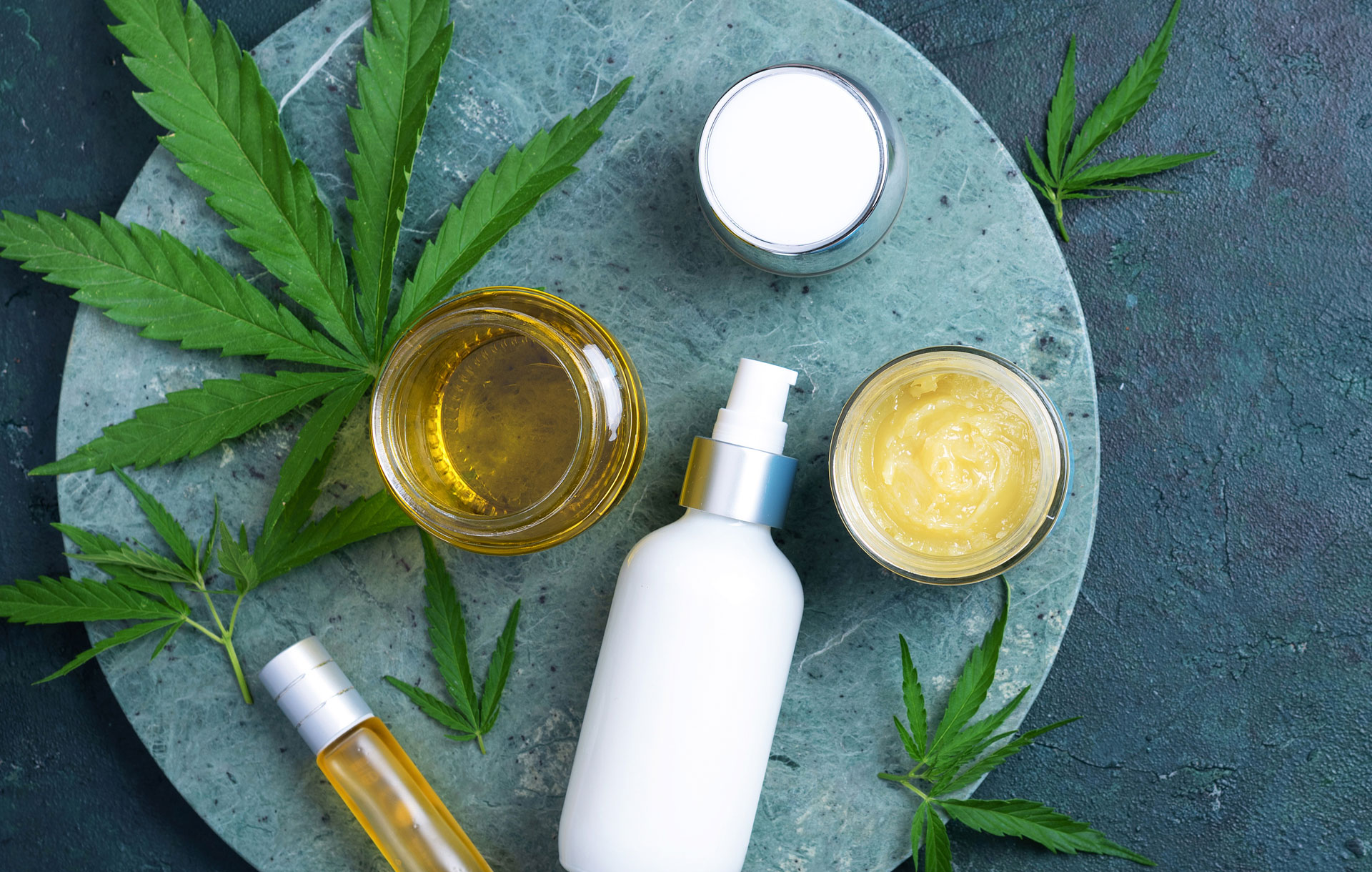Not all stress is bad. While the physical and emotional tension it creates often comes from events that cause us to feel nervous, angry, or frustrated, positive situations and circumstances—like moving to a new home, starting a new job, or bringing a new baby into the world—create stress, too. Moderate levels of stress are healthy, and experts say short-term, manageable stress (known as “eustress,” a term coined by endocrinologist Hans Selye) helps to motivate us, increase our focus, and helps our bodies resist oxidative damage that contributes to aging and disease. But pervasive stress in our lives, also known as “distress,” can affect us adversely if we don’t find ways to manage it. In this article, I’ll discuss how the not-so-good kind of stress impacts our bodies and skin, and I’ll share how CBD (cannabidiol) products can help to minimize its negative effects.
The Ways Stress Manifests Itself in the Body and Skin
Each and every one of us has experienced one or more of the symptoms of detrimental stress:
• Headaches
• Anxiety
• Stomach issues
• Restlessness
• Lack of motivation
• Loss of focus
• Muscle tension or pain
• Irritability
• Feeling overwhelmed
• Irritability
[ihc-hide-content ihc_mb_type=”show” ihc_mb_who=”2,4,5,6,7″ ihc_mb_template=”3″ ]
Uncontrolled stress can also cause or exacerbate skin issues. It causes a chemical response in the body as it increases cortisol production from the adrenal glands. In turn, sebaceous gland activity increases, producing greater amounts of oil and sebum that can lead to acne and increased skin sensitivity. Other skin conditions that stress can aggravate include psoriasis, rosacea, and eczema. It can also trigger fever blisters, hives, and other types of skin rashes.
CBD’s Effects on the Nervous System and How It Helps Regulate Stress
The nervous system drives how our bodies respond to stress. The Queensland Brain Institute, at the University of Queensland, Australia, suggests thinking about the nervous system as an electric grid. Picture the central nervous system as the powerhouse and the peripheral nervous system as the network of long cables that connect the powerhouse to cities and towns. Similar to a powerhouse generating electricity and the power company’s cables carrying electricity to the municipalities it serves, your central nervous system transmits information, which your peripheral nervous system carries to your body’s organs, glands, arms, and legs. Then, the peripheral nervous system sends feedback to the central nervous system.
With that visualization in mind, here’s a more detailed description of how it all works. The brain and spinal cord send signals to the parts of the body through a network of efferent neurons (motor neurons). The messages the motor neurons carry give the body instructions to perform functions such as breathing, body movement, digestion, and salivation. Then, afferent neurons (sensory neurons) receive sensory input (taste, touch, smell, taste, vision, and hearing) from the parts of the body and pass those signals to the central nervous system for the brain to encode the appropriate sensations. Afferent neurons also bring back information from the body’s organs to the brain, feedback that informs the brain whether organs are in a state of homeostasis or out of balance.
To achieve homeostasis, the body relies on another system, the endocannabinoid system (ECS), too. In the central nervous system, the ECS affects the brain’s response to inflammation and trauma and modulates pain signaling in the spinal cord. In the peripheral nervous system, the ECS regulates functions of the reproductive, urinary, and digestive tracts. Essentially, the more effectively the ECS does its job, the better able our bodies are to identify issues and preserve balance.
Endocannabinoids, a type of cannabinoid, is produced by our bodies and supports the endocannabinoid system. When our bodies experience a deficiency in endocannabinoids, CBD oil can help support the ECS system by penetrating the skin and imitating endocannabinoids. In other words, CBD helps restore homeostasis when the ECS has become imbalanced, which can in turn help our bodies deal with pain and inflammation.
The Benefits of CBD for Skin Health
Pain, inflammation, sebaceous gland imbalance, and immune response are among the root causes of many skin issues. Because of CBD’s effects on the ECS, incorporating CBD products in a skincare regimen may help improve skin conditions.
Here’s what CBD has to offer:
1 Readily Penetrates the Skin: Absorbed quickly, it can get right to work supporting the ECS system, helping to reduce inflammation.
2 Acts as an Antibacterial Agent: CBD has antibacterial properties, making it a useful treatment for acne.
3 Reduces Sebum Production: CBD has been shown to decrease sebaceous gland activity and help reduce acne.
4 Provides Anti-inflammatory Effects: Data suggests that CBD helps inhibit a pro-inflammatory cytokine that contributes to the development of acne. CBD can also help ease inflammation that occurs with atopic dermatitis, allergic contact dermatitis, and systemic sclerosis.
5 Reduces Pain: CBD interacts with the ECS to help reduce pain from acne flare-ups and other skin conditions.
6 Facilitates Wound Healing: For years, scientists have conducted studies to assess the use of topical CBD for treating wounds. In 2018, a small study conducted by Chelliah MP, Zinn Z, Khuu P, and Teng JMC, showed pediatric patients with epidermolysis bullosa (a group of diseases that causes blistering skin) treated with topical CBD experienced reduced pain, less blistering, and increased healing of their wounds.
7 Reduces Erythema: In a study, a cream containing three percent cannabis seed extract decreased skin sebum and erythema. This shows promise as a potential treatment for acne and seborrhea.
Considerations for choosing CBD Skin Products
Spa professionals should choose the CBD products they incorporate into their guest treatments carefully. Product quality, effectiveness, and safety vary widely. Before selecting products, learn about manufacturers’ purity and consistency standards and testing protocols. Your clientele deserves to have peace of mind knowing you’ve devoted the time and energy to research the brands and products you’re using to ensure optimal results and a safe guest experience. Do your homework, ask questions, and choose with scrutiny.
[/ihc-hide-content]













